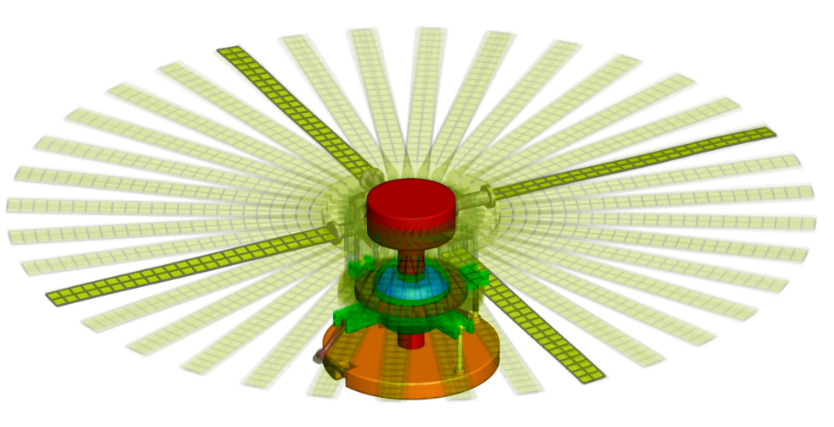About Me
Currently, I work as a Senior Research Engineer at ANSYS, focused on the development activities of the Fluent GPU solver offering orders of magnitude speed-up, and energy savings over classical CPU-based HPC in the context of computational fluid dynamics (CFD) simulations. I serve on the AIAA Technical Committees for Non-Deterministic Approaches (Full Member) and Multidisciplinary Design Optimization (Friend Member).

Passion
My passion lies in crafting simulation frameworks that mathematically-model and computationally-analyze the equilibrium of aerospace vehicle components with their environmental surroundings and operational conditions. My motivations are providing computational infrastructure for their design improvements through access to the statistics of quantities of interest and their corresponding sensitivities to design choices. Thus, I undertake as well as take-part in the development of scalable, flexible and robust computational frameworks – for scientific computing and targeted applications in aerospace vehicle design contexts such as fixed-wing aircrafts, rotorcrafts and space system robotic arms.
 | 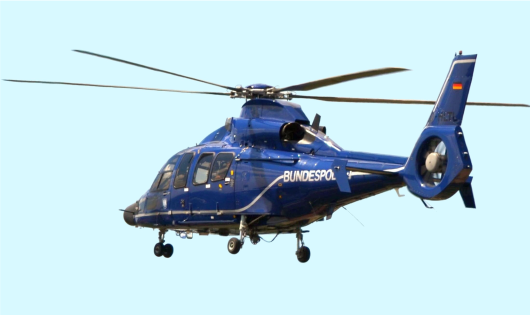 | 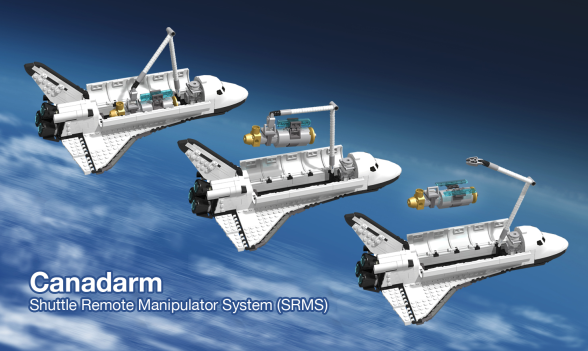 |
|---|---|---|
| Aircraft Design | Rotorcraft Design | Space Systems Design |
Graduate Research
I hold a Ph.D. in Aerospace Engineering from the Georgia Institute of Technology, conducting research as an assistant in the SMDO laboratory led by Prof. Graeme Kennedy.
I concentrated on the development of a computational flexible multibody dynamics framework with adjoint sensitivity analysis capabilities for the NASA Langley Research Center’s rotorcraft design applications. The deterministic framework provides access to high-fidelity data on the underlying physics and accurate gradients crucial for carrying out design improvement cycles in the context of aerospace vehicle design.
Coupled aerodynamic and structural response of blades in response to kinematic control inputs from push rods tilting the swash-plate.
This deterministic computational framework was also naturally generalized into an adjoint-enabled stochastic finite-element, flexible multibody dynamics framework. The stochastic framework is capable of providing access to statistical information on the quantities from aerospace structural design, and the corresponding adjoint gradients.
I also hold a Master’s degree in Aerospace Engineering from the University of Dayton working as a research assistant in Prof. Markus Rumpfkeil’s CFD laboratory.
- I focused on the development of applied methods for aerodynamic shape optimization under uncertainty using surrogate models, as well as mathematical techniques in abstraction for multi-surrogate based error-estimation and training-point-selection – utilizing higher-order derivatives and variable-fidelity training data.
For more detailed information, the theses and associated presentations shall be accessed below:
| Degree | Program | School | Year | Thesis | Slides |
|---|---|---|---|---|---|
| Ph.D | Aerospace Engineering | Georgia Institute of Technology | 2015 – 2020 | Adjoint Based Design Optimization of Systems with Time Dependent Physics and Probabilistically Modeled Uncertainties | 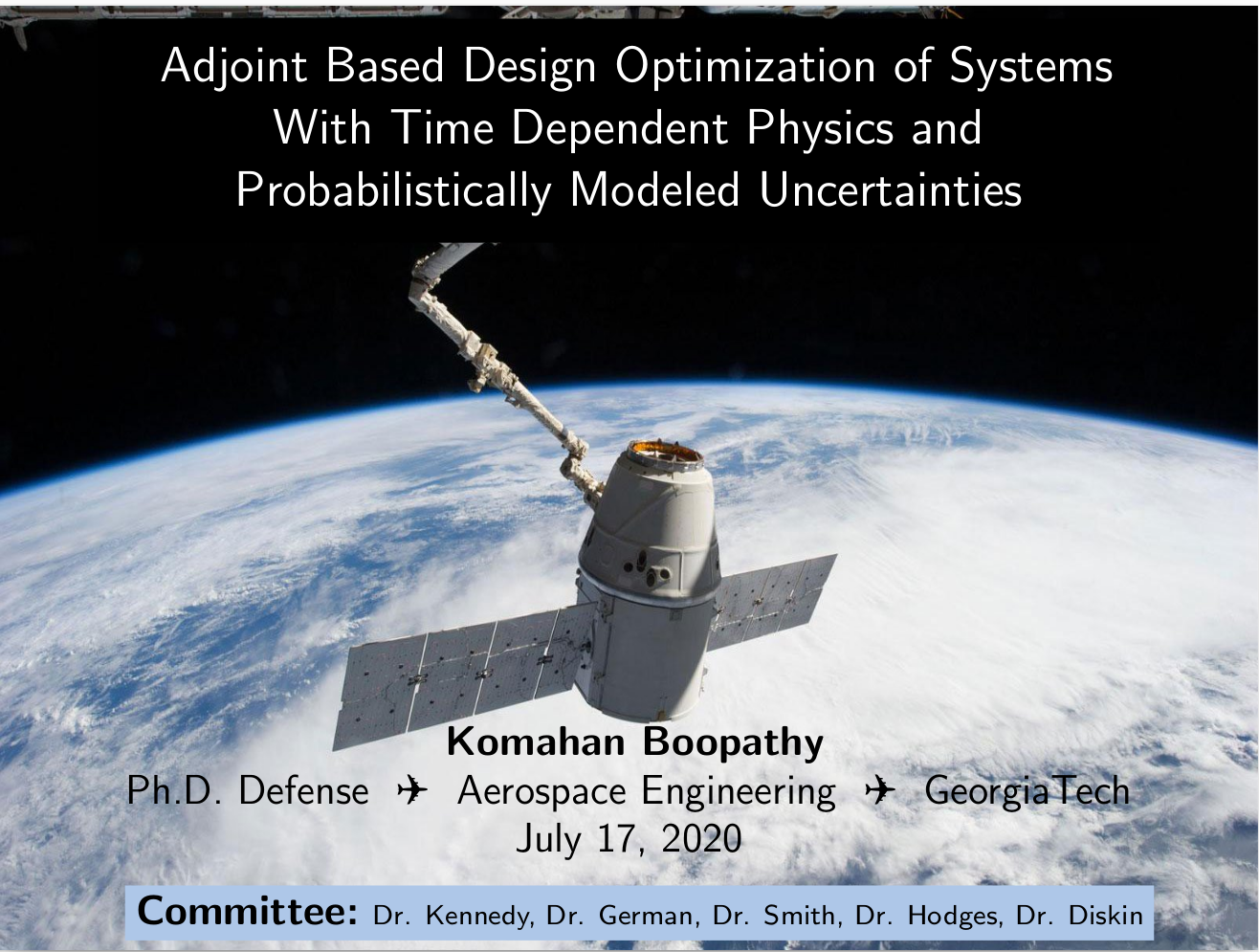 |
| M.S | Aerospace Engineering | University of Dayton | 2012 – 2014 | Uncertainty Quantification and Optimization Under Uncertainty Using Surrogate Models | 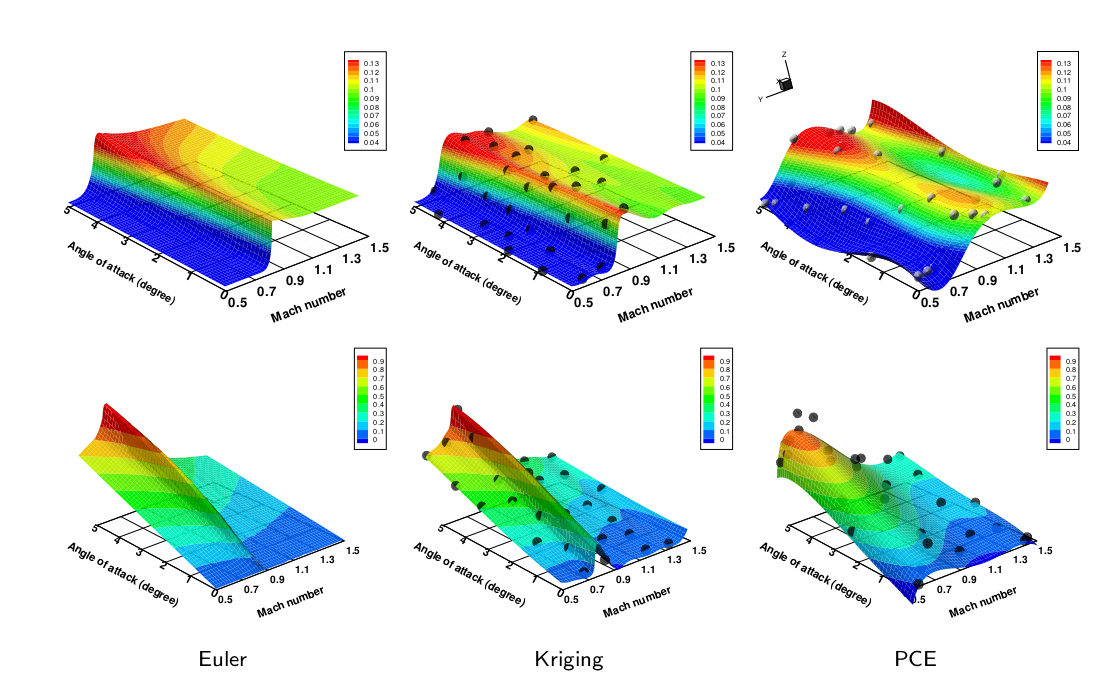 |

